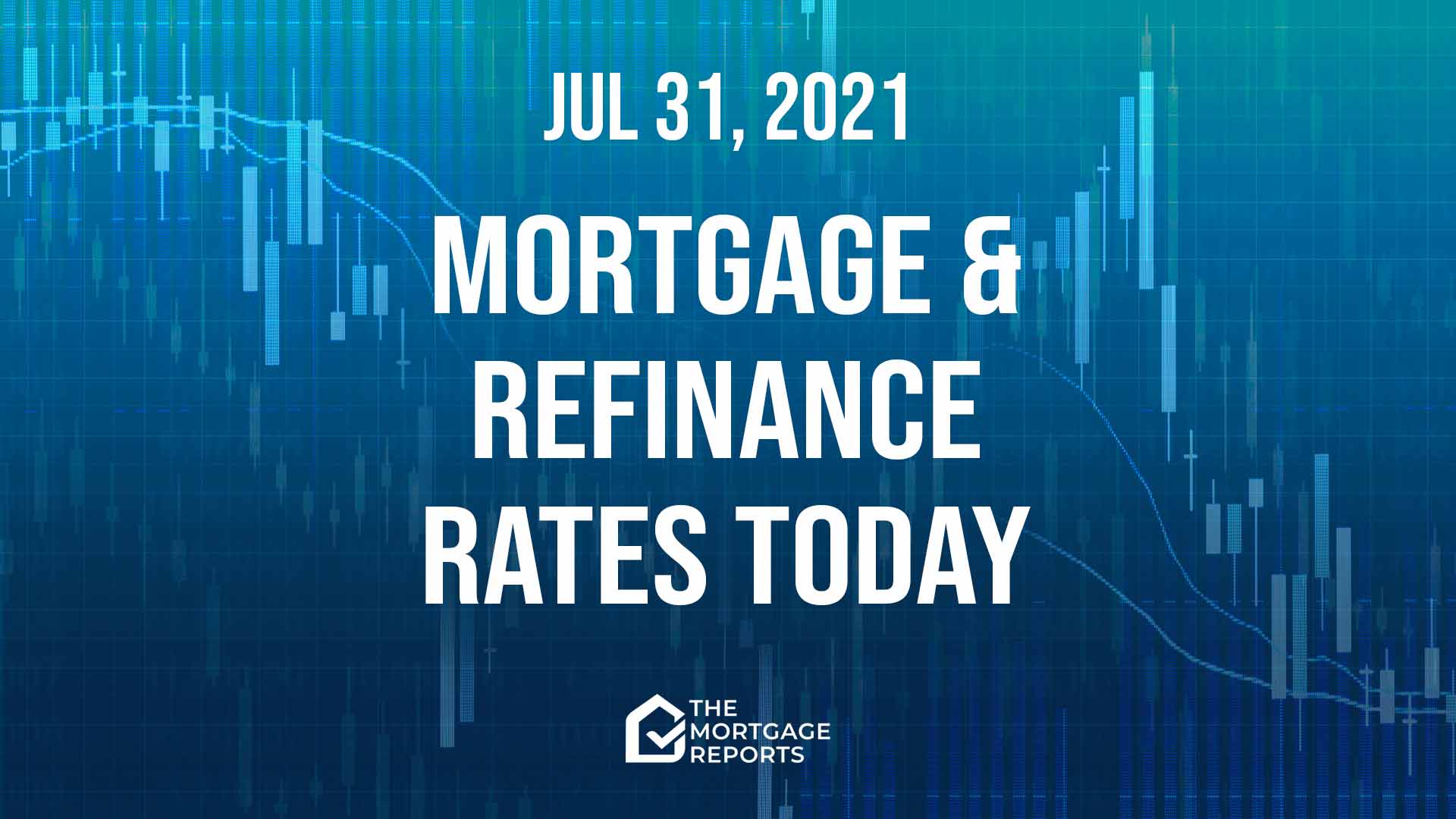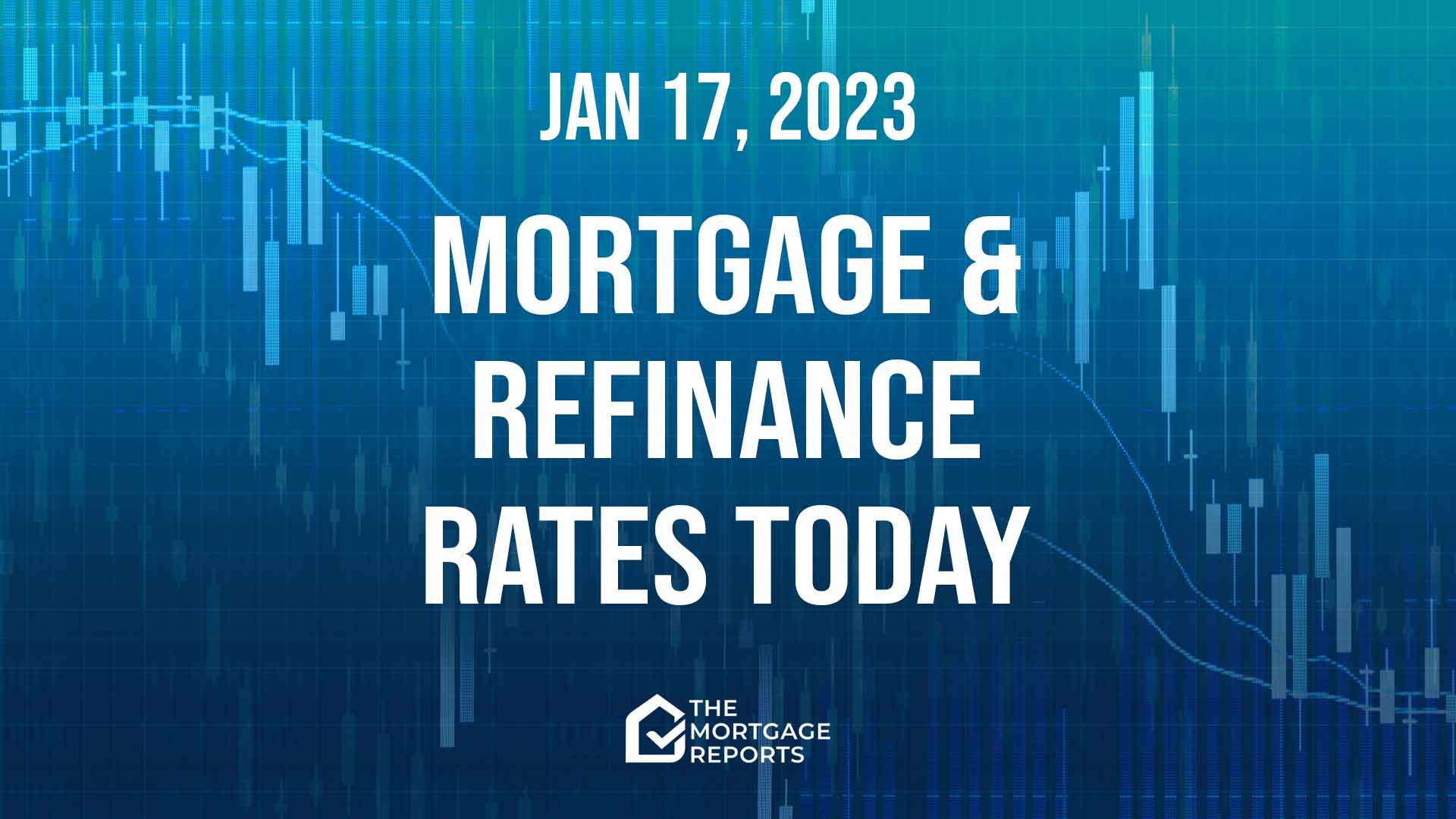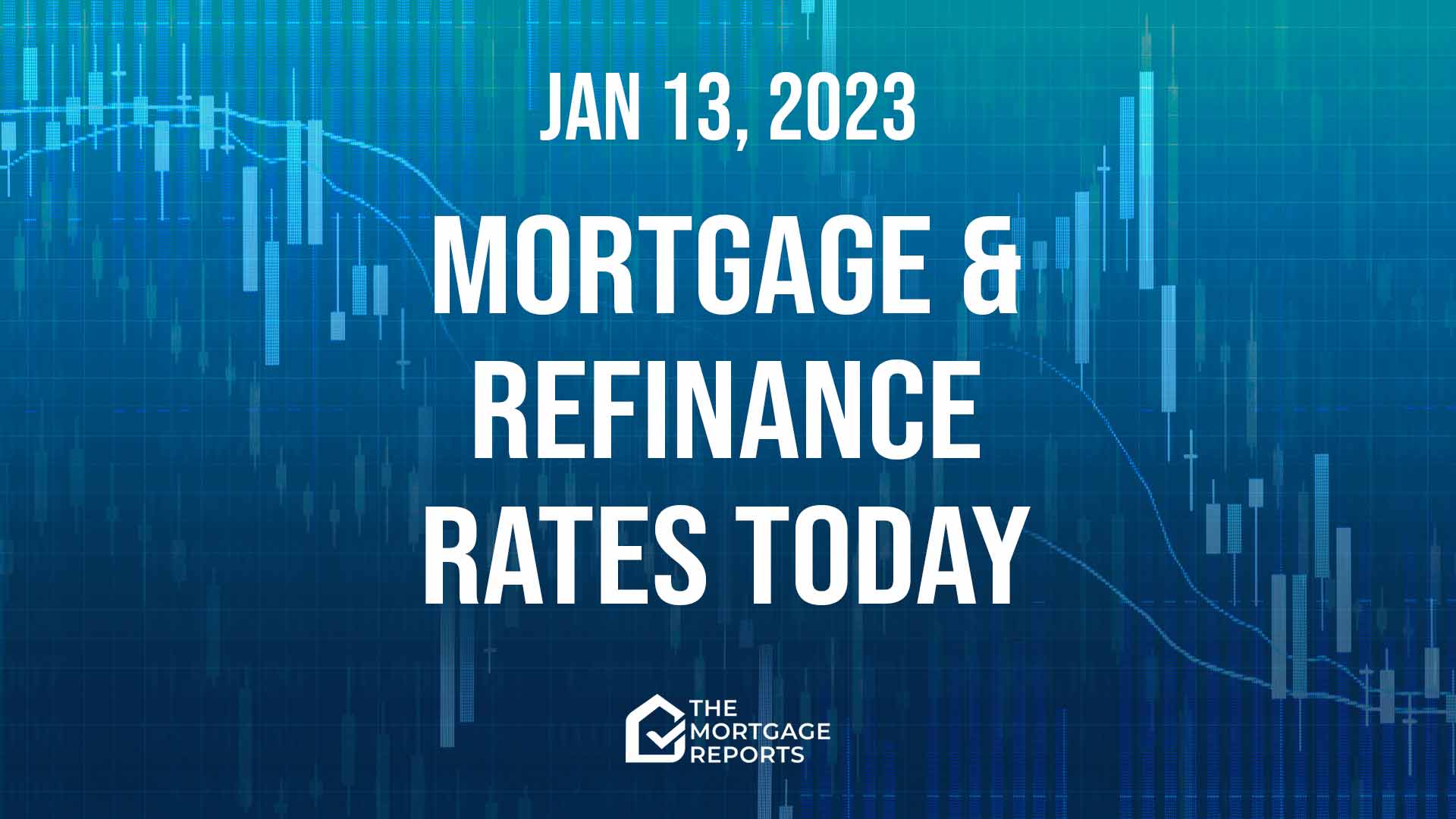
Today’s mortgage and refinance rates
Average mortgage rates edged downward yesterday. And the mostly slow drift toward lower rates continues.
Mortgage rates may well continue to drift lower next week. At least, there’s nothing in my crystal ball that suggests they won’t. But, with so much uncertainty at the moment, I’m working on hunches rather than reason.
Find and lock a low rate (Jul 31st, 2021)Current mortgage and refinance rates
| Program | Mortgage Rate | APR* | Change |
|---|---|---|---|
| Conventional 30 year fixed | |||
| Conventional 30 year fixed | 2.686% | 2.686% | Unchanged |
| Conventional 15 year fixed | |||
| Conventional 15 year fixed | 1.99% | 1.99% | Unchanged |
| Conventional 20 year fixed | |||
| Conventional 20 year fixed | 2.375% | 2.375% | Unchanged |
| Conventional 10 year fixed | |||
| Conventional 10 year fixed | 1.851% | 1.876% | Unchanged |
| 30 year fixed FHA | |||
| 30 year fixed FHA | 2.563% | 3.214% | Unchanged |
| 15 year fixed FHA | |||
| 15 year fixed FHA | 2.34% | 2.94% | Unchanged |
| 5/1 ARM FHA | |||
| 5/1 ARM FHA | 2.5% | 3.207% | Unchanged |
| 30 year fixed VA | |||
| 30 year fixed VA | 2.25% | 2.421% | Unchanged |
| 15 year fixed VA | |||
| 15 year fixed VA | 2.125% | 2.445% | Unchanged |
| 5/1 ARM VA | |||
| 5/1 ARM VA | 2.497% | 2.385% | Unchanged |
| Rates are provided by our partner network, and may not reflect the market. Your rate might be different. Click here for a personalized rate quote. See our rate assumptions here. | |||
COVID-19 mortgage updates: Mortgage lenders are changing rates and rules due to COVID-19. To see the latest on how coronavirus could impact your home loan, click here.
Should you lock a mortgage rate today?
It’s been a great July for mortgage rates. Based on Mortgage News Daily’s figures, they started the month at 3.18% (for a 30-year, fixed-rate mortgage) and ended it at 2.84%. That’s a fall of 34 basis points (abbreviated to BPS — a basis point is one-hundredth of 1%), which is worthwhile in anyone’s book.
True, 24 of those basis points were a result of bond markets’ mid-month panic attack. But that still leaves 10, which were just the market following its current trend. And, historically, a 10 BPS fall would be seen as a reason to celebrate.
Regular readers will know that none of this makes sense to me. And, in normal times, mortgage rates would be rising.
But I’m beginning to feel like a cross between Cassandra (the ancient Trojan prophet whose pronouncements were always accurate but never believed) and King Cnut, who famously ordered the tide to stop coming in and got his feet wet.
So, today, I’m changing my personal rate lock recommendations for the first time in months. But I’m doing so reluctantly because I (and most other professional observers of mortgage rates) believe those rates will start to rise sometime soon. So keep a close eye on this daily column. Because the following recommendations may change at any time:
- LOCK if closing in 7 days
- LOCK if closing in 15 days
- FLOAT if closing in 30 days
- FLOAT if closing in 45 days
- FLOAT if closing in 60 days
However, with so much uncertainty at the moment, your instincts could easily turn out to be as good as mine — or better. So be guided by your gut and your personal tolerance for risk.
What’s moving current mortgage rates
It’s hard to say what’s moving current mortgage rates. Normally, they go up as the economy improves and fall when it’s doing worse. Similarly, they tend to rise when inflation is strong and fall when it’s weak.
But those rules aren’t currently applying. And it’s hard to say why.
Of course, plenty of financial journalists are offering explanations. But, to me, they read like rationalizations and contain too many contradictions to make a coherent case.
To get your head around this, you first need to recognize that bond prices and yields move inversely to each other. So, when lots of people want to buy bonds, their prices rise, which is just supply and demand. But their yields fall as a result. Because, if you pay more for a fixed-interest security, your return on your investment will be smaller. In other words, the more you pay to receive the same income, the smaller your return (yield) will be.
So today’s low bond yields are a result of more people buying bonds. And that goes for mortgage rates, too. Because they’re determined by yields on mortgage-backed securities (MBSs), which are a type of bond.
Why buy bonds?
Investors like to balance their portfolios with higher yield, riskier assets, such as stocks, and lower yield, safer assets such as bonds. At the safest end of that spectrum sit US Treasury bills, notes and bonds. But MBSs are regarded as pretty safe, too.
So investors are currently stocking up on safe assets, which is why yields on Treasury products and MBSs are so low. That’s understandable if you think the economic recovery is likely to slow. But what’s strange is that they’re also buying stocks. On Monday, the United States Stock Market Index hit an all-time high. And people tend to buy stocks when economic confidence is high.
Meanwhile, even many of those currently buying bonds expect yields to rise. Yesterday, NASDAQ.com noted:
But record low real yields are often seen as a worrying sign, as they reflect a pessimistic view on future economic growth, which is why many bond bears remain undeterred because they expect a big bounceback for economic growth this year. Fifteen of the 23 banks and asset managers canvassed by Reuters said they still expect 10-year U.S. yields to end 2021 around 2%.
— NASDAQ.com, “Global bonds in July notch up best month since 2020 COVID meltdown,” July 30, 2021
That expected yield of 2% on 10-year US Treasury notes by the end of this year would be quite a jump. Because, yesterday, that yield closed at 1.23%. Chances are, mortgage rates would jump by a similar proportion. And, if that happens, it could take those rates to 4% or higher. By Dec. 31!
Just reread that Nasdaq quote. Notice any contradictions? Yes, bond bears are a strange breed. But even so.
Economic reports next week
Just like this week, there are plenty of important economic reports due out next week. But this week’s were largely shrugged off by investors. And it may well be the same for the upcoming ones.
The one that’s most likely to create waves is Friday’s official, monthly employment situation report. This has been a bit disappointing in recent months. And better numbers next week could finally persuade bond investors that the economic recovery is here to stay, something that should push up mortgage rates.
None of the other economic reports listed below is likely to cause much movement in markets unless it includes shockingly good or bad data. Moreover, regular readers will know that investors have been ignoring most economic reports in recent months. So the effects of the following may be different from usual:
- Monday — July Institute for Supply Management (ISM) manufacturing index. Plus June construction spending
- Tuesday — July motor vehicle sales. Plus June factory orders
- Wednesday — ADP private-sector employment report for July. Plus July ISM services index
- Thursday — Weekly new claims for unemployment insurance to July 31
- Friday — July employment situation report, comprising nonfarm payrolls, unemployment rate and average hourly earnings
Watch out for Friday’s employment report.
Find and lock a low rate (Jul 31st, 2021)
Mortgage interest rates forecast for next week
With little confidence, I think mortgage rates may drift a little lower this week. However, that’s solely based on the general direction of travel in recent months. And an excellent employment situation report on Friday could push those rates higher.
Mortgage and refinance rates usually move in tandem. And a gap that had grown between the two has been largely eliminated by the recent scrapping of the adverse market refinance fee.
How your mortgage interest rate is determined
Mortgage and refinance rates are generally determined by prices in a secondary market (similar to the stock or bond markets) where mortgage-backed securities are traded.
And that’s highly dependent on the economy. So mortgage rates tend to be high when things are going well and low when the economy’s in trouble.
Your part
But you play a big part in determining your own mortgage rate in five ways. You can affect it significantly by:
- Shopping around for your best mortgage rate — They vary widely from lender to lender
- Boosting your credit score — Even a small bump can make a big difference to your rate and payments
- Saving the biggest down payment you can — Lenders like you to have real skin in this game
- Keeping your other borrowing modest — The lower your other monthly commitments, the bigger the mortgage you can afford
- Choosing your mortgage carefully — Are you better off with a conventional, FHA, VA, USDA, jumbo or another loan?
Time spent getting these ducks in a row can see you winning lower rates.
Remember, it’s not just a mortgage rate
Be sure to count all your forthcoming homeownership costs when you’re working out how big a mortgage you can afford. So focus on your “PITI” That’s your Principal (pays down the amount you borrowed), Interest (the price of borrowing), (property) Taxes, and (homeowners) Insurance. Our mortgage calculator can help with these.
Depending on your type of mortgage and the size of your down payment, you may have to pay mortgage insurance, too. And that can easily run into three figures every month.
But there are other potential costs. So you’ll have to pay homeowners association dues if you choose to live somewhere with an HOA. And, wherever you live, you should expect repairs and maintenance costs. There’s no landlord to call when things go wrong!
Finally, you’ll find it hard to forget closing costs. You can see those reflected in the annual percentage rate (APR) you’ll be quoted. Because that effectively spreads them out over your loan’s term, making that higher than your straight mortgage rate.
But you may be able to get help with those closing costs your down payment, especially if you’re a first-time buyer. Read:
Down payment assistance programs in every state for 2021




